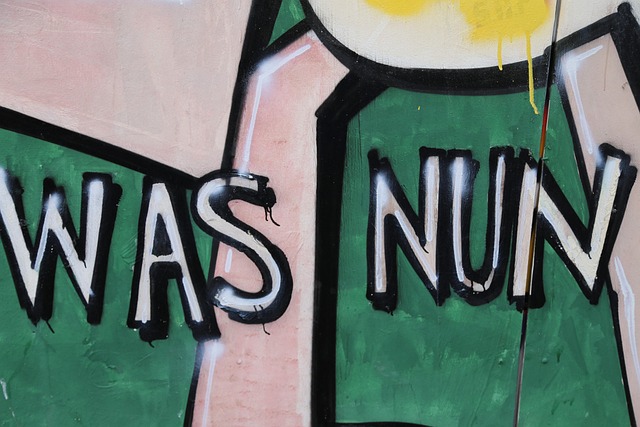What Is the Best Alt Coin to Buy Now? A Comprehensive Guide for Informed Investors
Author: Jameson Richman Expert
Published On: 2025-09-20
Prepared by Jameson Richman and our team of experts with over a decade of experience in cryptocurrency and digital asset analysis. Learn more about us.
Identifying the best altcoin to buy at any given moment requires a multi-faceted and sophisticated approach. The cryptocurrency landscape is highly dynamic, characterized by rapid technological innovation, fluctuating market sentiment, and significant volatility. To navigate this complex environment successfully, investors must perform thorough due diligence, considering not only current market trends but also underlying technological fundamentals, community strength, regulatory landscapes, and macroeconomic factors. This guide delves deeply into these aspects, providing advanced insights, detailed analysis frameworks, and practical strategies to help investors make informed decisions aligned with their financial objectives and risk tolerance.

Understanding the Cryptocurrency Ecosystem: Beyond Surface-Level Analysis
The first step in selecting promising altcoins is gaining a comprehensive understanding of the broader blockchain ecosystem. The thousands of cryptocurrencies available are divided into various categories based on their purpose, technological architecture, and development philosophy. These include:
- Layer 1 Blockchains: Native protocols such as Ethereum, Solana, Avalanche, and Cardano serve as foundational networks facilitating decentralized applications (dApps) and smart contracts. Their scalability, security, and decentralization features directly influence their long-term viability.
- Layer 2 Scaling Solutions: Protocols like Polygon, Arbitrum, and Optimism aim to alleviate congestion on Layer 1 chains by processing transactions off-chain or via rollups, thus improving throughput and reducing fees without compromising security.
- Sidechains and Interoperability Protocols: Projects such as Cosmos and Polkadot facilitate cross-chain communication, enabling different blockchains to interact and share assets seamlessly, which is crucial for a heterogeneous blockchain environment.
- DeFi and Niche Tokens: Tokens that power decentralized finance, gaming, privacy, or data management applications offer diverse utility and investment opportunities. Recognizing their specific roles enhances strategic asset allocation.
Furthermore, understanding consensus mechanisms—such as Proof of Work (PoW), Proof of Stake (PoS), Delegated Proof of Stake (DPoS), and emerging algorithms like Proof of Authority (PoA)—provides insights into network security, decentralization levels, and energy efficiency. For instance, PoS-based networks often offer faster transaction finality and lower energy consumption, making them more scalable for widespread adoption. Monitoring these technological trends, like sharding, zero-knowledge proofs, and rollups, indicates a project’s innovation trajectory and potential for long-term relevance.
Critical Factors for Evaluating Altcoins: Deep Dive
1. Technological Innovation and Real-World Use Cases
A successful altcoin must demonstrate technological robustness paired with compelling use cases. Examine:
- Technical Performance: High throughput (transactions per second), low latency, minimal fees, and strong security protocols are hallmarks of a scalable project. For example, Solana boasts thousands of TPS with low fees, positioning it as a high-performance blockchain.
- Development Activity: Active repositories on platforms like GitHub, frequent commits, and recent updates signal ongoing commitment. Analyzing code quality and engineering standards reveals the project’s technical maturity.
- Innovative Features: Zero-knowledge rollups for privacy, sharding for scalability, or cross-chain bridges for interoperability demonstrate strategic technological investments that can give a project competitive advantages.
- Alignment with Real-World Problems: Projects addressing tangible issues—such as supply chain transparency (VeChain), privacy (Monero), or financial inclusion (Celo)—are more likely to sustain long-term relevance.
2. Development Team & Community Dynamics
Assessing the credibility of the development team is paramount. Investigate:
- Background & Track Record: Team members with successful past projects or relevant industry experience add credibility.
- Transparency & Communication: Regular updates via blogs, social media, and AMA sessions foster trust and community engagement.
- Community Support: A vibrant, active community on Reddit, Discord, Telegram, and Twitter indicates grassroots support, organic growth, and resilience during market downturns.
- Partnerships & Ecosystem Growth: Collaborations with reputable institutions, integrations with major DeFi platforms, and inclusion in enterprise solutions serve as validation signals.
3. Market Metrics, Trading Liquidity & On-Chain Data
Reliable market data is essential for risk management and timing. Key indicators include:
- Market Cap & Circulating Supply: Larger market caps generally suggest stability; low circulating supply can lead to increased volatility.
- Trading Volume: Consistent volume indicates active trading and liquidity, reducing slippage risk during large trades.
- Liquidity Profiles: Use analytics platforms like CoinGecko or IntoTheBlock to examine liquidity pools, on-chain activity, and wallet distribution.
- On-Chain Metrics: Active addresses, transaction counts, and developer activity serve as signals of network health and adoption trends.
4. Ecosystem & Adoption Potential
An ecosystem thriving with strategic partnerships, developer activity, and real-world integrations enhances a project’s growth prospects. For example, Chainlink’s widespread adoption as an oracle across DeFi and enterprise platforms exemplifies ecosystem strength. Monitoring news, project updates, and pilot programs can reveal emerging adoption trends and institutional interest.
5. Regulatory Environment & Legal Risks
Regulatory clarity can significantly influence a project’s trajectory. Projects operating in jurisdictions with clear regulation and proactive compliance strategies are less prone to disruptions. Stay informed via official sources like government agencies, industry watchdogs, and trusted news outlets. Assess whether the project’s legal team has conducted thorough compliance reviews and established transparency standards to mitigate future legal risks.
Market Timing & Technical Analysis: Optimizing Entry & Exit
Even fundamentally strong altcoins can experience price corrections. Employ technical analysis tools for disciplined timing:
- Candlestick Patterns & Moving Averages: Identify trend reversals or continuations.
- RSI & MACD: Determine overbought or oversold conditions to guide entry/exit points.
- Fibonacci Retracements & Volume Analysis: Pinpoint support/resistance levels and confirm trend strength.
- Stop-Loss & Take-Profit Strategies: Implement predefined exit points to manage downside and lock in gains.

Diversification & Portfolio Management
Given the sector’s volatility, diversification remains a fundamental principle. Allocate across different segments—Layer 1 platforms, DeFi tokens, privacy coins, and gaming projects—to mitigate project-specific risks. Regular portfolio rebalancing aligned with evolving market conditions ensures resilience and capitalizes on emerging opportunities.
Reliable Resources for Deep Research
- News & Analysis: CoinDesk, CoinTelegraph, Messari, and Glassnode offer nuanced insights and macro trends.
- On-Chain Data & Analytics: IntoTheBlock, Nansen, and Santiment provide sophisticated on-chain metrics and investor behavior analysis.
- Developer & Community Intelligence: GitHub repositories, social media sentiment, and community engagement metrics inform about project vitality and investor confidence.
Choosing Reputable Exchanges & Ensuring Security
Selecting exchanges with strong security protocols, high liquidity, and regulatory compliance minimizes counterparty and security risks. Leading platforms like Binance, Kraken, and Coinbase Pro implement industry best practices, including cold storage, two-factor authentication, and regular audits. Adequate account security, such as hardware wallets for long-term holdings, further enhances safety during high volatility phases.

Conclusion: Developing a Strategic, Informed Approach to Altcoin Investing
Successfully identifying the best altcoin to buy now hinges on continuous research, advanced analysis, and disciplined risk management. Prioritize understanding technological fundamentals, community strength, market metrics, and legal considerations. Maintain patience, diversify investments, and develop clear entry and exit strategies. Staying educated through trusted resources and adapting to market shifts enhances your ability to capitalize on emerging opportunities. Ultimately, a strategic and well-informed approach is your most valuable asset in navigating the complexities of the altcoin universe and achieving long-term success.